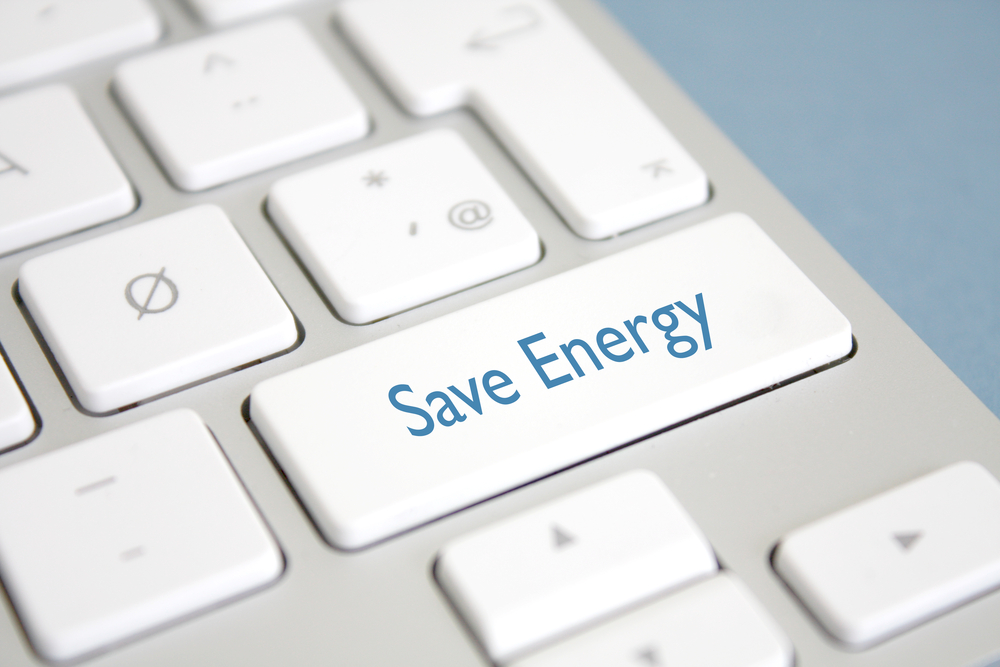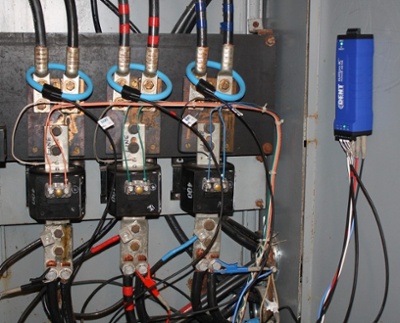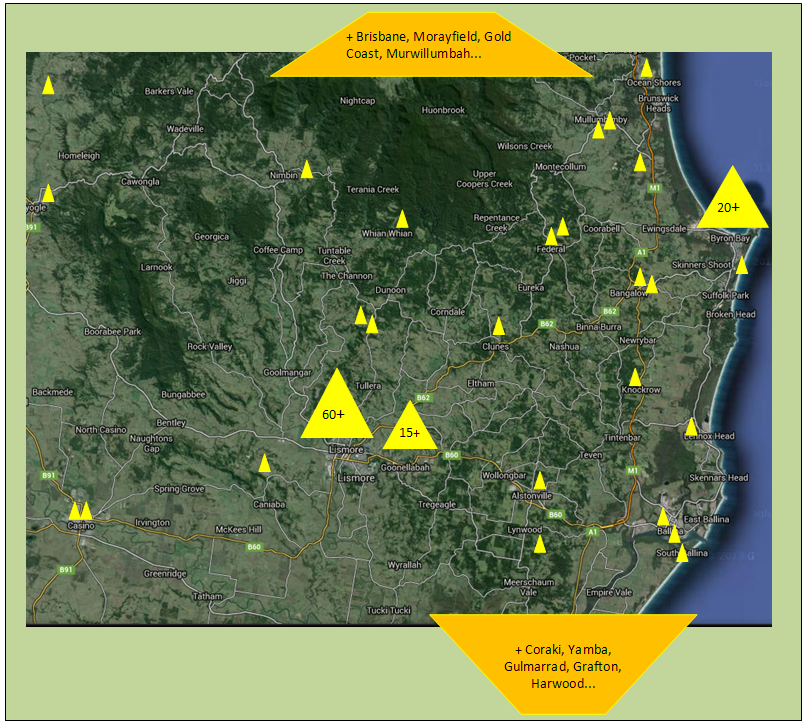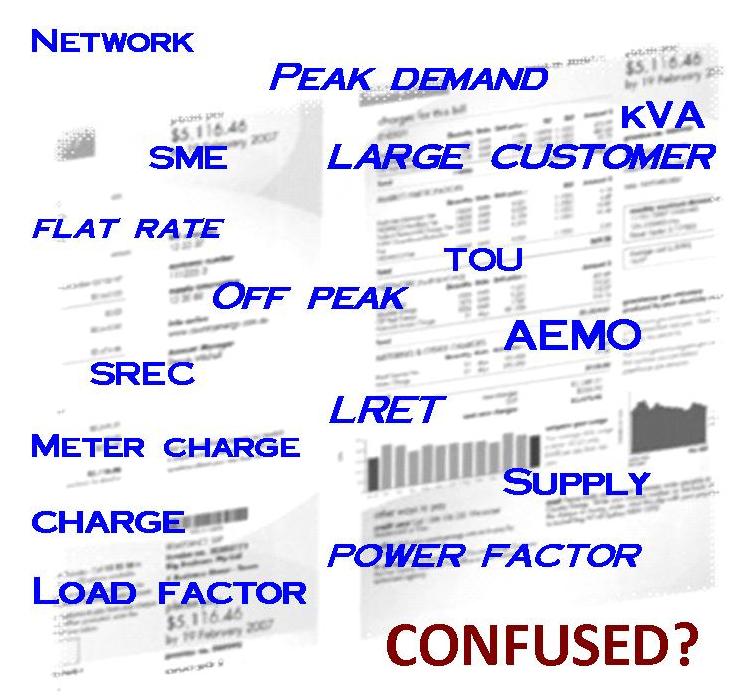From the experience of hundreds of completed energy audits and assessments, we know that reducing energy consumption is the first step towards lowering energy costs and carbon footprint.
Getting the best deal for power and gas can be the next step, as can be replacing energy bought from the grid with renewable energy.
Apart from getting a good rate for electricity, the tariff your business is on is crucial - for example, if you have PV Solar installed or plan to install it, the best tariff for you may be a flat tariff. Demand based tariffs can be expensive if your peak demand is high and cannot be covered by solar - but PV Solar can cut your peak demand charges dramatically at times of solar generation. Lately, battery storage has become affordable enough to support peak demand shaving.
Powersmart works independently of any energy company. The modest fee you pay for our service gets you get independent and unbiased advice. This is different from Energy Brokers, who (typically) get paid by the successful bidder.
You will recover our very reasonable fees within less than 1 month to 6 months maximum. Guaranteed.
Learn more about empowering yourself and being 'powersmart'. It often takes surprisingly little financial outlay to achieve big cost savings.
"Low hanging fruit" account for 5 - 15% of the typical savings potential, at minimal costs. We make sure you take advantage of it.
Any power-saving investment with a payback of less than 3-5 years is money well spent - the payback period reduces every time prices go up. And they will go up as network providers try to maintain their profits in the face of more and more customers install PV Solar or leave the grid altogether.
Some of our typical projects:
Power prices on the up again… Why?
The recent Announcement from AEMO (the ‘Regulator’) suggest that power prices will go up in the eastern states from between 20 to 25 cents per kWh in July 23 for the DEFAULT offer. This means that for anyone not on the default offer the price increase will be somewhat less but still SIGNIFICANT.
Why does this happen? AEMO cites the Ukraine war and consequent pressures on the gas price (LNG), which amazingly still is the price-setter in Australia. Price-setter means that gas, being used as the fuel of last resort, sets the overall price. And it’s very expensive right now.
If you ask us, the entire system is corrupt. It is true that gas is the last resort IF COAL AND ALL SOURCES OF RENEWABLE ENERGY FAIL TO DELIVER AT THE SAME TIME. This hardly ever happens in real life, so why should gas be allowed to set the price for any period? At a time when Origin and Co deliver record profits to shareholders, power prices go up again. Wrong, if you ask me.
What can we do?
Have your own solar power is still the answer that comes to mind first, coupled with smart use of your own power. Use it, when the sun is shining, because feed-in tariffs are minuscule now. Another thing that makes me wonder why!!
As more and more retailers offer only plans with embedded peak demand (kVA or kW based), avoid having too many power-hungry appliances running ta the same time to limit your peak energy use. For exampel, turn off your aircons when cooking.
As understandable as this peak demand charging is from the network’s perspective (the aim is to reduce the total load on the network in times of possible network constraints = avoid blackouts), the approach taken is highly unfair for those who simply have no choice, and smacks of just another revenue raising measure.
If you can’t change your way of using energy in peak hours (4pm to 9am) try to find a retailer that still offer plans on a flat rate only without charging for demand. According to CHOICE, you’ll be better off in almost every way.
2021 – power price and solar outlook
2020 has been defined by large reductions in wholesale power prices across the board, largely due to solar and wind energy playing a bigger role with their low costs of generation.
Consumers have benefitted by lower electricity prices and higher competition. This is to continue into 2021. After 2021 prices may move up again as increased spending is required to adapt the existing grid to taking up more and more renewable energy. This means not only new interconnectors to be built, but also strengthening the grid at the “thin end” of the grid (where more and more small and medium solar systems feed into the grid.
The drop in prices has the downside of greatly reduced feed-in rates for surplus solar energy. Quite often, even now, the grid cannot take all the power in the midday hours that is produced by a myriad of rooftop solar systems. Rates have reduced already, and we anticipate that we will see TOU feed-in rates sometime soon. This means that solar system owners will only be paid if and when there is demand on the grid. It also means different rates at different times of the day.
For example, a retailer could pay 15 cents per kWh for the hours of 7am to 10am, nothing until 3pm, then 10 cents for 3pm to 5pm, then 20 cents for the time 5pm until the sun goes down.
The logical consequence is this: Solar system owners with east and west-facing solar panels will benefit mostly, particularly those with unshaded west-facing solar panels. The old advice of facing solar panels north is no longer true.
Power prices – quo vadis?
Where are power prices heading? The answer may be two-fold:
The increasing output of small and large scale solar is putting enormous pressure on wholesale prices, soc much that generators at times face negative prices. Bad for coal and gas, easier for solar as the input costs are NIL.
This should filter down to lower retail prices within the next 1-2 years.
It may not been long-lived though, as in order to accommodate more wind and solar, the existing infrastructure needs to be revamped massively. That comes at a cost, and guess who’s going to pay for it?
In any case, investing in solar is still very attractive, especially for those with money in the bank. Where else do you get a safe return of around 15-20% without any risk at all?
Solar Batteries – where to from here
TESLA’s Powerwall 2 was released in 2017 and was set to revolutionize Li-Ion battery pricing. With twice the capacity of its predecessor, and at a cost of approx. A$8,000 in 2017, it briefly dropped the price to under $600 per kWh! The cost included all electronics, such as inverters and monitoring software.
Since then, the AU dollar has lost value and demand for batteries is outstripping demand – the price for a Powerwall 2 is now approx. $13,000. Other suppliers have followed suit. Expect to pay a minimum of $650 per kWh useable today in December 2019. However, the costs for large scale batteries are coming down, driven by demand response installations currently being built or in the planning stages. It is expected to filter through to smaller users as production and competition increases.
Expert such as Finn Peacock form ‘Solarquotes’ recommend NOT installing batteries right now UNLESS you have a good reason to do so: frequent blackouts, medicinal reasons etc.
We cannot agree more. It is just a matter of time until prices for domestic batteries will drop.
For business, peak-demand management with solar power and highly efficient batteries is already cost effective. With electricity pricing already going up and foretasted to go significantly higher, battery storage looks increasingly interesting.
Are power prices really going down?
There has been some media focus on projections for lower power prices in future years being put forward by AEMO. The reason cited was that more cheap renewable energies coming online and exert pressure on distributors and retailers.
Well, We think this is wishful thinking. Any transition to a new energy system based largely in Renewables will require massive investments upfront, such as new transmissions links, stronger substations and distribution networks where the generation happens, and more interconnections between States. Guess who is going to pay for that?
In the distant future, there is a good chance that a largely renewable energy based energy supply system will provide much cheaper energy for all of us, but that may be 10-20 years in the future. Mind you, this transition is inevitable for our survival as a civilization, but there will be upfront cost and long term benefits.
Be “powersmart”
Energy Efficiency is the key to unlocking the potential for making big energy savings. PV Solar is sexy, yes, but lighting retrofits, aircon retrofits, window and ceiling insulation etc. can pay back much faster than solar power.
Within Powersmart, we have seen many times how the 4 pillars of energy efficiency can reduce power bills by up to 80%:
LED lighting, aircon optimisation, reducing heat ingress and solar power.
Of utmost importance is the choice of technology and the quality of products within each technology. Ask us! We know which products have stood the test of time, which technologies are more than hype, which suppliers are reputable.
Resources
Powersmart – Goodbye Grid brochure for donload and print (.pdf)
Goodbyegrid – all about independent energy systems
Solar Quotes – Comparison table of solar battery storage systems
ENOVA Energy – Your local energy retailer for the Northern Rivers
One step off the grid – Free newsletter dedicated to off grid and hybrid solar living
(more to come)
- Powersmart Guarantee: Our advice never costs more than what you will save in 6 months of operation.
- Reducing energy use is typically the cheapest way of cutting energy costs.
- Energy Efficiency is also the key to lowering your carbon footprint, as every kWh of electricity or gas not used is saving many more kWhs in mining of coal or gas, transporting it, processing it and generating electricity from it.
- Renewable Energy options such as solar power and/or battery storage can be instrumental for reducing peak demand charges, load profile shifting or leaving the grid altogether.
Peak demand shaving, load shifting, air conditioning retrofits, LED lighting, PV Solar, voltage reduction, refrigeration retrofits, VFD technology, passive solar…. ask us what’s best for your business.
We created GOODBYE GRID as a one-stop shop for those of our visitors that want to get rid of the shackles of the traditional, central electricity grid. Our advice, as always, is based on facts and independent and unbiased towards any technology or technology vendor.
Smart battery technology (“Hybrid Solar Systems”) are becoming more attractive. Some businesses are better suited than others to take advantage of PV Solar. Solar PV can be extremely beneficial for businesses with large peak demand (kVA) during the day or for businesses on a flat kWh rate.
Battery storage technology can shift solar generation towards non-sunshine hours for businesses such as clubs, hotels or restaurants, or take advantage of (lower) off peak rates to cover the demand peaks at peak or shoulder times.
Powersmart has the expertise and the dedicated monitoring equipment to establish the Load Profiles of your site, work out the potential return of a solar system and show you other options to reduce power costs.
Test us out – we stand by our commitment that we won’t stop working for you until you’re satisfied with the result.

















